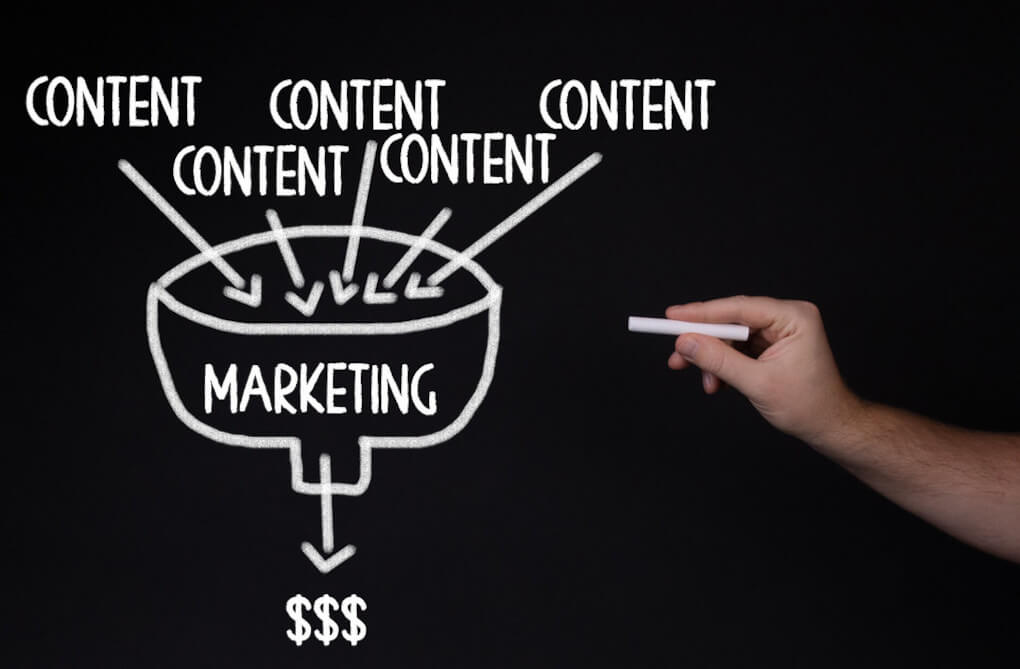In marketing, the main objective is to communicate the appropriate message to the appropriate audience at the appropriate moment via the appropriate distribution channel, correct?
Based on an article published by the Harvard Business Review, the 4 Ps of conventional marketing, price, placement, promotion, and product—must be shaken up and context-specific so that they take into account the specific requirements, preferences, and conditions of the target audience.
The customers ’ overall experience can be improved with contextual marketing by delivering information-driven content that is tailored to a person based on their specific circumstances and requirements. The cultivation of deeper, more lasting relationships is aided by the distribution of interactive content through the medium that your intended audience prefers to use.
The Present Situation in Marketing
In case you didn’t get the memo, marketing is no longer always about you, your brand, your product, or your campaign message. Most people haven’t gotten this message, but just in case you didn’t: When it comes to marketing, everything revolves around putting the client and their requirements first.
Nobody gives a damn about how incredible your product is or how much genius went into making it. No one cares. Nowadays, audiences expect you to be pertinent to them in some way. The patience of your clients will begin to wear thin as technological advancements continue to accelerate, as well as improvements are made to AI technology and predictive analytics.
Therefore, as Marketers, we have a responsibility to improve our ability to engage our customers by providing content that they want, require, or love. This means that rather than discussing the products you sell, you should discuss the motivations behind those sales. We ought to produce content that is both more contextualized and more profoundly personalized if we want to increase the efficiency of our marketing. The audiences of today are extremely busy, and they anticipate that the content they consume will both convey a narrative and enlighten them in a manner that is either helpful, educational, or enjoyable.
The Advantages of Using Context in Marketing

Cost Efficient
The implementation of contextual marketing does not call for a significant financial outlay. You simply need to have the appropriate data to expand on the context of your communications. This entails configuring a customer relationship management (CRM) tool for the collection and information extraction of customer data. When it comes to choosing the option that is the most suitable for your company, you have several options to pick from. Even options for CRM tailored specifically for small companies with limited budgets are now available.
Directed Traffic
The use of sophisticated target marketing is at the heart of contextual marketing. You can target your prospects at the precise moment that they are about to decide whether to buy your product or service if you zero in on a particular behavior and demographic. This not only allows you to put your brand in the spotlight, but it also gives you the ability to do so at the most opportune moments, increasing your chances of engagement, recall, and brand recognition.
Improved Satisfaction and Experience For The Consumer
If a solution to your issue suddenly materialized in front of you as if by magic, how amazed would you be? As a result of the high degree of personalization offered by contextual marketing, the message that is conveyed to a customer is delivered at the ideal moment and is perfectly positioned. Consumers do not require being inundated with targeted advertisements that they do not desire or require at any given time. You merely need to convey the information that they require at the precise moment that they require it.
You can ensure that each potential customer or client receives the appropriate attention by working to improve the context of your marketing campaign. When a customer perceives that they are more than just another sale, trust is established, and they acquire a greater sense of self-assurance regarding your brand.
Increased Levels of Interaction with Customers
Contextual marketing aims to establish engagements with customers by attempting to anticipate their requirements to meet those requirements. In addition to having the opportunity to present your brand directly to the consumer, you will also be able to promote active engagement in the communications associated with your brand. The more you can interact with your customers, the higher the likelihood that you will keep them as customers and turn them into advocates for your brand.
It Doesn’t Disrupt your clients or target audience
Nobody enjoys having their work, their schedule, or their tasks disrupted daily. Imagine the following:
It is now summertime. The time has come for your old air conditioner to take its final breath. It is sweltering outside. So, you whine about the temperature on various social media platforms. Your computer displays an advertisement for a price discount for air conditioning systems all of a sudden in the form of a banner. You look into it. If it’s a fantastic offer, you won’t let it slip through your fingers. You will probably proceed to the next step. Contextual marketing makes it so that the offering does not look like an advertisement to the customer. You will consider it a solution to the issue that you are having.
Increases in both Sales and Revenue
Your conversion rates will be greater, which will result in a rise in sales numbers. This is because the adverts that you are blogging are aimed specifically, individualized, and strategically placed at the time that your consumer is about to purchase. When compared to large-scale, conventional, widespread endeavors that target the wider populace rather than a particular niche, this approach is significantly more efficient.
How to Get Started with the Collection of Customer Information
How then can you determine whether or not you are prepared to engage in contextual marketing, and where should you start? When it comes to creating segments that can assist you in determining the context in which you will establish your strategy, the CRM tool that you use will be of critical importance. Before beginning a campaign of contextual marketing, you will need to complete the following steps:
Establish the Phases of Your Lifecycle
The different stages of a consumer’s lifecycle offer information regarding where they are in the purchasing process. Once you have an understanding of the lifecycle stages, you can sort the contacts in your database into categories such as prospects, subscribers, marketing/sales qualified leads, clients, and so on. This will make it possible for you to divide your existing clients and potential clients into different groups, which will assist you in determining the kind of marketing content that is most likely to persuade those groups.
Identify Your Buyer Persona
Buyer personas depict your ideal clients. You may choose to develop a single buyer persona or numerous buyer personas, based on the industry or niche in which you operate. This will assist you in categorizing each of your connections and identifying the most appropriate content as well as the platform through which you can communicate with them.
Imagine that each persona is a real person with their own unique set of daily activities or work processes, obstacles, difficulties, needs, desires, and plans. When you go into this with a greater level of specificity, it will be much simpler for you to construct a robust path that will bring your ideal customers right up to your front door.
Boost the Performance of Your SEO Strategy
SEO is a constantly changing landscape. Because new strategies and fashions emerge on an annual basis, you must review your website and optimize it for search engines. This will allow your target audience to locate your content in the appropriate context when they are looking for it.

Make sure to double-check your keywords. Are you ranking for the keywords that members of your ideal buyer personas or particular target audience looking for? If search engines are unable to crawl your site in the correct manner and users are unable to find your content, then you are throwing away content that is extremely relevant and highly useful. What purpose does it serve to have content that no one can access? Keep in mind that stuffing your content full of keywords is not what SEO is about. You ought to optimize it not only for users but also for search engine spiders. Ensure that your content has flawless grammar and a compelling narrative.
Determine Which of Your Content Is Performing Best
The kinds of things that your users and your target audience need and want can be gleaned from the content that performs best for you. Pages and posts on your website that receive a high number of clicks and have exceptionally high engagement levels are likely to be those that your target audience is looking for.
After you have determined which of your blog posts performs better than the others, you will be able to generate content that is centered on the subject matter or theme that was most successful. Also, take into consideration the formats of the content. Which configurations did your users utilize the most frequently? eBooks, videos, or frequent blog posts — which do they prefer to consume?
Your content that performs the best can also offer knowledge and insight about the context of your customers and target audience, allowing you to create content that is more individualized and customized to the unique requirements of each user.
Summary
The use of contextual marketing is an effective method for generating more sales and revenue while simultaneously reaching out to your target audience. Because it is intended for use in conjunction with a particular strategy that is directed toward a particular demographic of individuals, its effectiveness can be easily evaluated by focusing solely on the relevant distribution channel.
When it comes to creating your brand, creating interest, and attracting more customers, contextual marketing can be extremely simple, yet incredibly effective. The examples given above make this point abundantly clear. At its core, contextual marketing requires nothing more than high-quality data and the know-how to apply it in the appropriate setting, to the appropriate audience, at the appropriate time, and via the appropriate distribution channel. Visit this page if you are ready to start a contextual marketing campaign with the assistance of content strategists.





